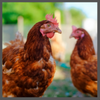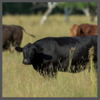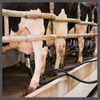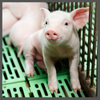-

Mar
30
Local Agriculture Market Program receive USDA funding

“Through these grant programs, we are able to maximize opportunities for economic growth and ingenuity in the local and regional food system. These grants have generated new income sources for small, beginning, and historically underserved farmers; increased local food access across rural and urban communities; and provided platforms for value-added and niche products to shine,” said Agriculture Secretary Tom Vilsack.
Read more
-

Mar
30
Legislators concerned about potential poultry merger

With food prices at an all-time high, the letter expresses extreme concern that further consolidation will raise poultry prices even higher for Americans. Currently, chicken prices have increased by 15% compared to pre-pandemic prices, with cut pay for farmers and limits protections for workers.
Read more
-

Mar
30
Food Price Index has hit record high

The Food and Agriculture Organization of the United Nations (FAO) released the FAO Food Price Index for February 2022, and if you’ve been to the grocery store lately, you will not be surprised to hear, food prices have reached a record high. The highest two categories were vegetable oils and dairy products.
Read more
-

Mar
30
FDA clears genome-edited beef cattle trait

“Today’s decision underscores our commitment to using a risk and science-based, data-driven process that focuses on safety to the animals containing intentional genomic alterations and safety to the people who eat the food produced by these animals,” said Steven M. Solomon, D.V.M., M.P.H., director of the FDA’s Center for Veterinary Medicine.
Read more
-

Mar
30
Canada’s proposed USMCA deemed unacceptable by dairy groups

All that American dairy farmers want is fair and good-faith implementation of USMCA’s dairy provisions. That doesn’t seem like a high bar, yet it appears to be insurmountable for Canada based on yesterday’s proposed dairy TRQ scheme changes,” said Jim Mulhern, President, and CEO of the National Milk Producers Federation (NMPF).
Read more
-

Mar
30
Agricultural impact of Russia-Ukraine conflict

The Russian invasion of Ukraine is expected to have a rippling effect throughout the United States and the rest of the world. Experts warn the U.S. agriculture system could suffer because of the conflict, with disruption of trade flows, greater inflationary pressures, and an increase in volatility across a wide range of global markets.
Read more
-

Mar
30
$215 million in USDA funds for meat and poultry processing capacity

The United States Department of Agriculture (USDA) announced there will be up to $215 million in grants and other support to expand meat and poultry processing options, strengthen the food supply chain, and create jobs and economic opportunities in rural areas.
Read more
-

Mar
23
Interpretive Summary: Insulin signaling and antioxidant proteins in adipose tissue explants from dairy cows challenged with hydrogen peroxide are altered by supplementation of arginine or arginine plus methionine

In nonruminants, oxygen-derived free-radicals such as hydrogen peroxide produced during stressful events impair insulin responsiveness including glucose uptake, protein synthesis, and fatty acid metabolism.
Read more
-

Mar
23
Interpretive Summary: Effects of α-glycerol monolaurate on intestinal morphology, nutrient digestibility, serum profiles, and gut microbiota in weaned piglets

Glycerol monolaurate (GML) is naturally present in breast milk as well as other natural sources such as coconut oil and is widely used as a food additive. Dietary α-GML is used in animal production due to its safe-guarding health and growth-promoting effects.
Read more
-

Mar
23
Interpretive Summary: Function of m6A and its regulation of domesticated animals’ complex traits

N6-methyladenosine (m6A) is the most abundant RNA modification in eukaryotes. Current studies showed that the m6A modification widely regulates a series of life processes, such as biological metabolism, growth and development, inflammation, and cancer.
Read more
-

Mar
23
Interpretive Summary: Transcriptome analyses indicate that heat stress-induced inflammation in white adipose tissue and oxidative stress in skeletal muscle is partially moderated by zilpaterol supplementation in beef cattle

Heat stress (HS) negatively impacts livestock health and carcass quality. Supplementation of livestock with β-adrenergic agonists (β-AA) increases muscle mass and decreases fat deposition.
Read more
-

Mar
23
Interpretive Summary: Dietary supplementation with fiber, “biotics,” and spray-dried plasma affects apparent total tract macronutrient digestibility and the fecal characteristics, fecal microbiota, and immune function of adult dogs

A variety of functional ingredients—those that provide benefits beyond their nutritional value—may be added to pet foods to support gastrointestinal and immune health.
Read more
-

Mar
20
ASAS Undergraduate Scholar Recognition
The American Society of Animal Science would like to help you in recognizing your outstanding animal science students.
Read more
-

Mar
20
ASAS National President, Dr. Mike Tokach's Presidential Midwest Meeting Reception
Many attendees joined ASAS National President, Dr. Tokach at his Midwest Meeting Reception on Tuesday, March 15th.
Read more
-

Mar
10
Interpretive Summary: Grape seed tannin extract and polyunsaturated fatty acids affect in vitro ruminal fermentation and methane production

Condensed tannins can modulate methane emissions and ruminal biohydrogenation, but effects depend on type and dose.
Read more
-

Mar
10
Interpretive Summary: The effect of breed, sex, and oral meloxicam administration on pain biomarkers following hot-iron branding in Hereford and Angus calves

The primary objective was to examine the effects of oral meloxicam (MEL), compared with a control, administered at the time of hot-iron branding in Angus and Hereford steers and heifers.
Read more
-

Mar
10
Interpretive Summary: Whole genome sequence analyses-based assessment of virulence potential and antimicrobial susceptibilities and resistance of Enterococcus faecium strains isolated from commercial swine and cattle probiotic products

Probiotics, also called direct-fed microbials, are widely used in swine and cattle production systems, as an alternative for antibiotics. The benefits of feeding probiotic products include growth promotion and gut functional benefits.
Read more
-

Mar
10
Interpretive Summary: Limiting factors for milk production in dairy cows: perspectives from physiology and nutrition

With increasing milk yields in dairy cows, potential limiting factors are intensively discussed. The present review addresses physiological and nutritional constraints that are considered limiting for milk production.
Read more
-

Mar
10
Interpretive Summary: Nutritional evaluation of fish protein hydrolysate and its application in piglet production

Fish protein hydrolysate (FPH), a new protein material rich in peptides and free amino acids, has the potential to serve as an alternative to traditional fish meal.
Read more
-

Mar
10
Interpretive Summary: Effects of harvest date and growth stage on triticale forages in the southwest United States: agronomic characteristics, nutritive value, energy density, and in vitro disappearance of dry matter and fiber

Our objectives were to screen 14 triticale cultivars for agronomic and nutritive value characteristics with specific emphasis on identifying typical, as well as deviant, responses to the calendar date and plant maturity.
Read more
 MarLocal Agriculture Market Program receive USDA funding
MarLocal Agriculture Market Program receive USDA funding “Through these grant programs, we are able to maximize opportunities for economic growth and ingenuity in the local and regional food system. These grants have generated new income sources for small, beginning, and historically underserved farmers; increased local food access across rural and urban communities; and provided platforms for value-added and niche products to shine,” said Agriculture Secretary Tom Vilsack.
“Through these grant programs, we are able to maximize opportunities for economic growth and ingenuity in the local and regional food system. These grants have generated new income sources for small, beginning, and historically underserved farmers; increased local food access across rural and urban communities; and provided platforms for value-added and niche products to shine,” said Agriculture Secretary Tom Vilsack. MarLegislators concerned about potential poultry merger
MarLegislators concerned about potential poultry merger With food prices at an all-time high, the letter expresses extreme concern that further consolidation will raise poultry prices even higher for Americans. Currently, chicken prices have increased by 15% compared to pre-pandemic prices, with cut pay for farmers and limits protections for workers.
With food prices at an all-time high, the letter expresses extreme concern that further consolidation will raise poultry prices even higher for Americans. Currently, chicken prices have increased by 15% compared to pre-pandemic prices, with cut pay for farmers and limits protections for workers. MarFood Price Index has hit record high
MarFood Price Index has hit record high The Food and Agriculture Organization of the United Nations (FAO) released the FAO Food Price Index for February 2022, and if you’ve been to the grocery store lately, you will not be surprised to hear, food prices have reached a record high. The highest two categories were vegetable oils and dairy products.
The Food and Agriculture Organization of the United Nations (FAO) released the FAO Food Price Index for February 2022, and if you’ve been to the grocery store lately, you will not be surprised to hear, food prices have reached a record high. The highest two categories were vegetable oils and dairy products. MarFDA clears genome-edited beef cattle trait
MarFDA clears genome-edited beef cattle trait “Today’s decision underscores our commitment to using a risk and science-based, data-driven process that focuses on safety to the animals containing intentional genomic alterations and safety to the people who eat the food produced by these animals,” said Steven M. Solomon, D.V.M., M.P.H., director of the FDA’s Center for Veterinary Medicine.
“Today’s decision underscores our commitment to using a risk and science-based, data-driven process that focuses on safety to the animals containing intentional genomic alterations and safety to the people who eat the food produced by these animals,” said Steven M. Solomon, D.V.M., M.P.H., director of the FDA’s Center for Veterinary Medicine. MarCanada’s proposed USMCA deemed unacceptable by dairy groups
MarCanada’s proposed USMCA deemed unacceptable by dairy groups All that American dairy farmers want is fair and good-faith implementation of USMCA’s dairy provisions. That doesn’t seem like a high bar, yet it appears to be insurmountable for Canada based on yesterday’s proposed dairy TRQ scheme changes,” said Jim Mulhern, President, and CEO of the National Milk Producers Federation (NMPF).
All that American dairy farmers want is fair and good-faith implementation of USMCA’s dairy provisions. That doesn’t seem like a high bar, yet it appears to be insurmountable for Canada based on yesterday’s proposed dairy TRQ scheme changes,” said Jim Mulhern, President, and CEO of the National Milk Producers Federation (NMPF). MarAgricultural impact of Russia-Ukraine conflict
MarAgricultural impact of Russia-Ukraine conflict The Russian invasion of Ukraine is expected to have a rippling effect throughout the United States and the rest of the world. Experts warn the U.S. agriculture system could suffer because of the conflict, with disruption of trade flows, greater inflationary pressures, and an increase in volatility across a wide range of global markets.
The Russian invasion of Ukraine is expected to have a rippling effect throughout the United States and the rest of the world. Experts warn the U.S. agriculture system could suffer because of the conflict, with disruption of trade flows, greater inflationary pressures, and an increase in volatility across a wide range of global markets. Mar$215 million in USDA funds for meat and poultry processing capacity
Mar$215 million in USDA funds for meat and poultry processing capacity The United States Department of Agriculture (USDA) announced there will be up to $215 million in grants and other support to expand meat and poultry processing options, strengthen the food supply chain, and create jobs and economic opportunities in rural areas.
The United States Department of Agriculture (USDA) announced there will be up to $215 million in grants and other support to expand meat and poultry processing options, strengthen the food supply chain, and create jobs and economic opportunities in rural areas. MarInterpretive Summary: Insulin signaling and antioxidant proteins in adipose tissue explants from dairy cows challenged with hydrogen peroxide are altered by supplementation of arginine or arginine plus methionine
MarInterpretive Summary: Insulin signaling and antioxidant proteins in adipose tissue explants from dairy cows challenged with hydrogen peroxide are altered by supplementation of arginine or arginine plus methionine In nonruminants, oxygen-derived free-radicals such as hydrogen peroxide produced during stressful events impair insulin responsiveness including glucose uptake, protein synthesis, and fatty acid metabolism.
In nonruminants, oxygen-derived free-radicals such as hydrogen peroxide produced during stressful events impair insulin responsiveness including glucose uptake, protein synthesis, and fatty acid metabolism. MarInterpretive Summary: Effects of α-glycerol monolaurate on intestinal morphology, nutrient digestibility, serum profiles, and gut microbiota in weaned piglets
MarInterpretive Summary: Effects of α-glycerol monolaurate on intestinal morphology, nutrient digestibility, serum profiles, and gut microbiota in weaned piglets Glycerol monolaurate (GML) is naturally present in breast milk as well as other natural sources such as coconut oil and is widely used as a food additive. Dietary α-GML is used in animal production due to its safe-guarding health and growth-promoting effects.
Glycerol monolaurate (GML) is naturally present in breast milk as well as other natural sources such as coconut oil and is widely used as a food additive. Dietary α-GML is used in animal production due to its safe-guarding health and growth-promoting effects. MarInterpretive Summary: Function of m6A and its regulation of domesticated animals’ complex traits
MarInterpretive Summary: Function of m6A and its regulation of domesticated animals’ complex traits N6-methyladenosine (m6A) is the most abundant RNA modification in eukaryotes. Current studies showed that the m6A modification widely regulates a series of life processes, such as biological metabolism, growth and development, inflammation, and cancer.
N6-methyladenosine (m6A) is the most abundant RNA modification in eukaryotes. Current studies showed that the m6A modification widely regulates a series of life processes, such as biological metabolism, growth and development, inflammation, and cancer. MarInterpretive Summary: Transcriptome analyses indicate that heat stress-induced inflammation in white adipose tissue and oxidative stress in skeletal muscle is partially moderated by zilpaterol supplementation in beef cattle
MarInterpretive Summary: Transcriptome analyses indicate that heat stress-induced inflammation in white adipose tissue and oxidative stress in skeletal muscle is partially moderated by zilpaterol supplementation in beef cattle Heat stress (HS) negatively impacts livestock health and carcass quality. Supplementation of livestock with β-adrenergic agonists (β-AA) increases muscle mass and decreases fat deposition.
Heat stress (HS) negatively impacts livestock health and carcass quality. Supplementation of livestock with β-adrenergic agonists (β-AA) increases muscle mass and decreases fat deposition. MarInterpretive Summary: Dietary supplementation with fiber, “biotics,” and spray-dried plasma affects apparent total tract macronutrient digestibility and the fecal characteristics, fecal microbiota, and immune function of adult dogs
MarInterpretive Summary: Dietary supplementation with fiber, “biotics,” and spray-dried plasma affects apparent total tract macronutrient digestibility and the fecal characteristics, fecal microbiota, and immune function of adult dogs A variety of functional ingredients—those that provide benefits beyond their nutritional value—may be added to pet foods to support gastrointestinal and immune health.
A variety of functional ingredients—those that provide benefits beyond their nutritional value—may be added to pet foods to support gastrointestinal and immune health. MarASAS Undergraduate Scholar Recognition
MarASAS Undergraduate Scholar Recognition MarASAS National President, Dr. Mike Tokach's Presidential Midwest Meeting Reception
MarASAS National President, Dr. Mike Tokach's Presidential Midwest Meeting Reception MarInterpretive Summary: Grape seed tannin extract and polyunsaturated fatty acids affect in vitro ruminal fermentation and methane production
MarInterpretive Summary: Grape seed tannin extract and polyunsaturated fatty acids affect in vitro ruminal fermentation and methane production Condensed tannins can modulate methane emissions and ruminal biohydrogenation, but effects depend on type and dose.
Condensed tannins can modulate methane emissions and ruminal biohydrogenation, but effects depend on type and dose. MarInterpretive Summary: The effect of breed, sex, and oral meloxicam administration on pain biomarkers following hot-iron branding in Hereford and Angus calves
MarInterpretive Summary: The effect of breed, sex, and oral meloxicam administration on pain biomarkers following hot-iron branding in Hereford and Angus calves The primary objective was to examine the effects of oral meloxicam (MEL), compared with a control, administered at the time of hot-iron branding in Angus and Hereford steers and heifers.
The primary objective was to examine the effects of oral meloxicam (MEL), compared with a control, administered at the time of hot-iron branding in Angus and Hereford steers and heifers. MarInterpretive Summary: Whole genome sequence analyses-based assessment of virulence potential and antimicrobial susceptibilities and resistance of Enterococcus faecium strains isolated from commercial swine and cattle probiotic products
MarInterpretive Summary: Whole genome sequence analyses-based assessment of virulence potential and antimicrobial susceptibilities and resistance of Enterococcus faecium strains isolated from commercial swine and cattle probiotic products Probiotics, also called direct-fed microbials, are widely used in swine and cattle production systems, as an alternative for antibiotics. The benefits of feeding probiotic products include growth promotion and gut functional benefits.
Probiotics, also called direct-fed microbials, are widely used in swine and cattle production systems, as an alternative for antibiotics. The benefits of feeding probiotic products include growth promotion and gut functional benefits. MarInterpretive Summary: Limiting factors for milk production in dairy cows: perspectives from physiology and nutrition
MarInterpretive Summary: Limiting factors for milk production in dairy cows: perspectives from physiology and nutrition With increasing milk yields in dairy cows, potential limiting factors are intensively discussed. The present review addresses physiological and nutritional constraints that are considered limiting for milk production.
With increasing milk yields in dairy cows, potential limiting factors are intensively discussed. The present review addresses physiological and nutritional constraints that are considered limiting for milk production. MarInterpretive Summary: Nutritional evaluation of fish protein hydrolysate and its application in piglet production
MarInterpretive Summary: Nutritional evaluation of fish protein hydrolysate and its application in piglet production Fish protein hydrolysate (FPH), a new protein material rich in peptides and free amino acids, has the potential to serve as an alternative to traditional fish meal.
Fish protein hydrolysate (FPH), a new protein material rich in peptides and free amino acids, has the potential to serve as an alternative to traditional fish meal. MarInterpretive Summary: Effects of harvest date and growth stage on triticale forages in the southwest United States: agronomic characteristics, nutritive value, energy density, and in vitro disappearance of dry matter and fiber
MarInterpretive Summary: Effects of harvest date and growth stage on triticale forages in the southwest United States: agronomic characteristics, nutritive value, energy density, and in vitro disappearance of dry matter and fiber Our objectives were to screen 14 triticale cultivars for agronomic and nutritive value characteristics with specific emphasis on identifying typical, as well as deviant, responses to the calendar date and plant maturity.
Our objectives were to screen 14 triticale cultivars for agronomic and nutritive value characteristics with specific emphasis on identifying typical, as well as deviant, responses to the calendar date and plant maturity.



